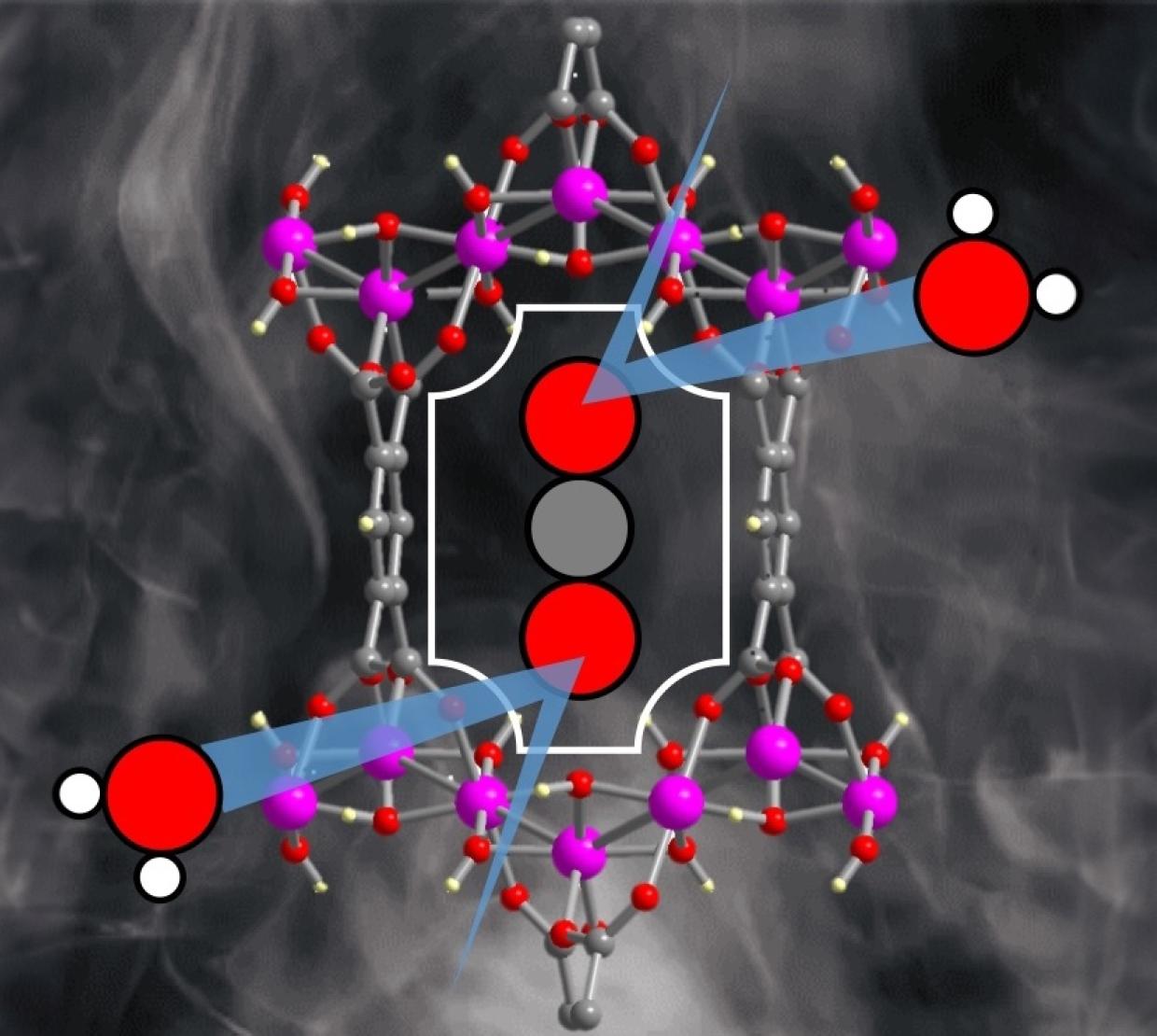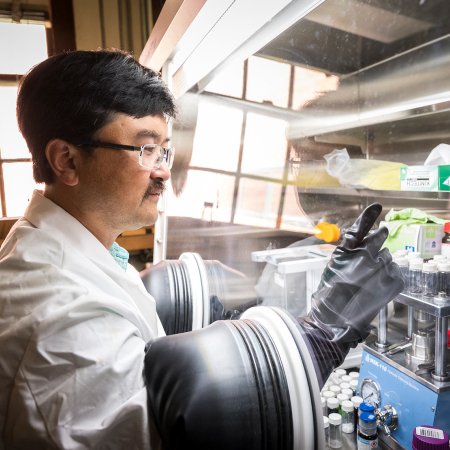Researchers in the College of Science have demonstrated the potential of an inexpensive nanomaterial to scrub carbon dioxide from industrial emissions.
The findings, published in Cell Reports Physical Science, are important because improved carbon capture methods are key to addressing climate change, said Oregon State's Kyriakos Stylianou, who led the study.
Carbon dioxide, a greenhouse gas, results from burning fossil fuels and is one of the primary causes of a warming climate.
Facilities that filter carbon from the air are beginning to spring up around the globe – the world’s largest opened in 2021 in Iceland – but they’re not ready to make a large dent in the worldwide emissions problem, Stylianou notes. In a year, the Iceland plant can draw out a carbon dioxide amount equivalent to the annual emissions of about 800 cars.
However, technologies for mitigating carbon dioxide at the point of entry into the atmosphere, such as a factory, are comparatively well developed. One of those technologies involves nanomaterials known as metal organic frameworks, or MOFs, that can intercept carbon dioxide molecules through adsorption as flue gases make their way through smokestacks.
“The capture of carbon dioxide is critical for meeting net-zero emission targets,” said Stylianou, who holds the endowed position of Terence Bradshaw Chemistry Professor. “MOFs have shown a lot of promise for carbon capture because of their porosity and their structural versatility, but synthesizing them often means using reagents that are costly both economically and environmentally, such as heavy metal salts and toxic solvents.”
In addition, dealing with the water portion of smokestack gases greatly complicates removing the carbon dioxide, he said. Many MOFs that have shown carbon capture potential lost their effectiveness in humid conditions. Flue gases can be dried, Stylianou said, but that adds significant expense to the carbon dioxide removal process, enough to make it nonviable for industrial applications.
“So we sought to come up with a MOF to address the various limitations of the materials currently used in carbon capture: high cost, poor selectivity for carbon dioxide, low stability in humid conditions, and low CO2 uptake capacities,” he said.
Read more here.




